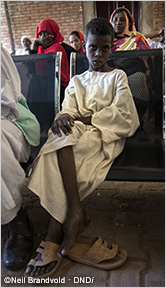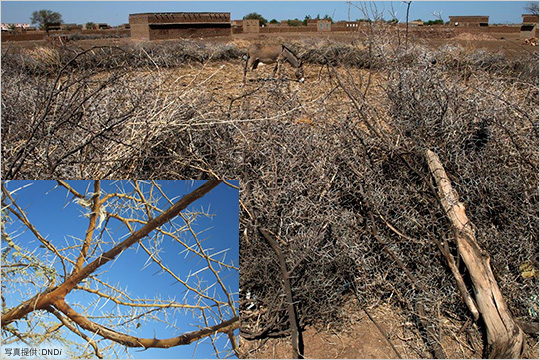October 24, 2016
Mycetoma is an infectious disease endemic to tropical and subtropical areas such as in South America and Africa. The fungal form of mycetoma (eumycetoma) is a chronic condition that mainly affects people in Africa. Once infected, large lesions appear on the hands and feet, and if the disease progresses, many patients will eventually lose the ability to walk or become unable to work due to serious disability caused by the disease. Currently, there is no highly effective medicine available, and in the worst case, amputation is often the best and only chance patients have.
Not only do many patients suffer from social stigma, eumycetoma causes patients a heavy financial burden from both being unable to work because of the symptoms as well as the high cost of treatment.
Eumycetoma is most probably transmitted through pricks to the skin, particularly from the thorns of acacia trees which are common in Sudan, an African country known for having the highest burden from the disease. When the branches of the acacia tree wither, they fall onto the ground, and these fallen branches become a source of infection when they come into contact with animal droppings. It is thought that the infection spreads when people step on these thorns with bare feet. In Sudan, poor people as well as young farmers and herdsmen who live and work barefoot in rural areas are at the highest risk of contracting the disease.


Until recently, few studies were conducted to understand the epidemiology of mycetoma and eumycetoma. However, in May 2016, the World Health Organization (WHO) decided to add mycetoma to its official list of neglected tropical diseases (NTDs), the list of tropical diseases WHO considers as a global health issue that the human race must overcome. The addition to the list means that more detailed surveys will be conducted by WHO and the health ministries of in endemic countries to consider elimination strategies, while accelerate the new drug development.
Eisai is currently working on a joint research and development project of a new treatment for eumycetoma with the international non-profit organization Drugs for Neglected Diseases initiative (DNDi). Currently, research led by DNDi into Eisai's E1224 compound (fosravuconazole) is in progress, and clinical trials are expected to begin in Sudan this fiscal year.
(For further details, please refer to: https://www.eisai.com/sustainability/atm/innovation/010.html)
Eisai continues to work hard on the development of medicines in order to deliver hope to all those suffering from mycetoma, including young people and children in Africa.
